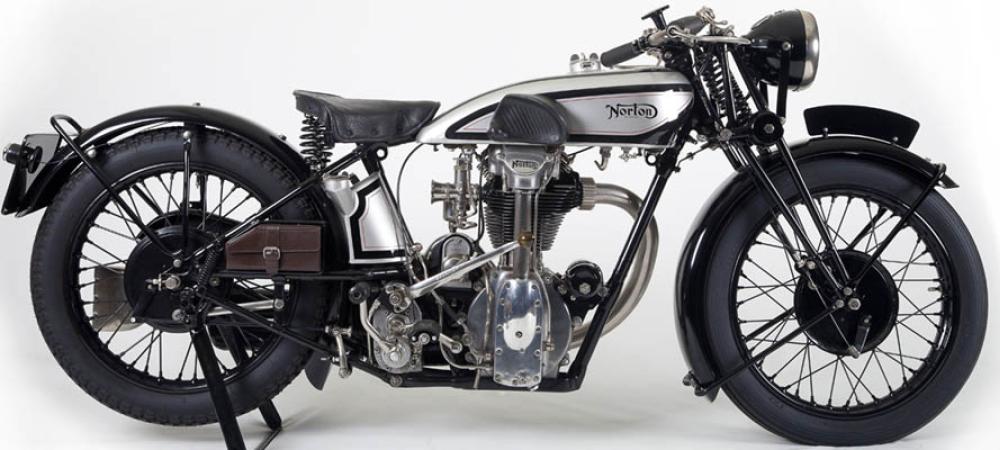A review of correspondence from NOC-L
A summary of alternators and charging
| QUICK LINKS TO THE MOST USEFUL POSTINGS | |
| Warning light assimilators | Alternator output considerations |
| Zener diodes | Boyer electronic ignition |
| Lucas alternator types | Rectifiers |
Warning Light Assimilators
The warning light assimilator controls the charge indicator light very crudely. It contains a pair of normally-closed bi-metal contacts which allow current from the battery to light the charge indicator light when the ignition is swtiched on. The assimilator also has a fine heating coil near the contacts. This coil is connected directly to the alternator stator. Its job is when it senses sufficient AC output from the stator to heat the coil, the bi-metal contacts open, extinguishing the indicator light. Anyhow, you can see that a burnt out bulb or even a defective assimilator has no effect to the operation of the system.
[See Alan Osborn's article for a more detailed description of Norton assimilators - Editor].
[Whereas the Lucas alternator is of the permanent magnet type, - Ben English] by contrast many Japanese alternators use a rather clever 'wound' rotor, [or excited field - Ben English] which is fed only enough current to generate the voltage required by the system at any point in time. This function is handled by a regulator (usually solid state). The charge indicator light in these systems is in 'series' with the regulator's power feed from the battery (gives the regulator its 'exciting current'), and hence will light when the ignition is switched on. When the engine starts, the alternator produces electricity, and feeds the regulator end of the indicator light, nullifying the voltage across the lamp, and causing it to extinguish. Thus, you can see that if the indicator light is burnt out, there will be no feed to give the regulator its exciting current, and hence the alternator will not start producing electricity.
Zener Diodes
The zener diode's job is really to act as an automatic valve (pardon the metaphor) that dumps excess electricity as required. To be technically correct, it is a voltage-sensitive semiconductor that only begins to conduct once the applied voltage reaches a certain ('zener') threshold. At that point, the zener begins to conduct more and more current, with very small incremental increases in its applied voltage. Since the zener is effectively in parallel with the alternator via the rectifier, the applied voltage is the alternator's rectifed output. The zener 'senses' and dumps any excess electricity from the alternator by converting it to heat.
So, if your alternator is low on output, or other things use up the available power (like headlamps being on all the time in Norway), it's pretty clear that the zener won't have much work to do: there isn't any 'excess' electricity to deal with, because it (1) isn't being generated in the first place, or (2) something like a high power headlamp is dumping (using) it instead.
A higher voltage zener can only help in as much as it will let the system output rise further before the zener starts dumping electricity. A zener can't compensate for a weak alternator, or excessive loading on the system. So, removal of the zener, and running with lights off can be disastrous because there's nothing there to shed the excess generated power.
Lucas's use of a zener is pretty unsophisticated, since zeners require a series resistance in the system to protect them from self destructing as the input voltage increases (its output voltage is not temperature compensated either, the way lead-acid batteries like it to be). Lucas simply rely on the internal impedance of their alternator to rapidly choke down the available output voltage as the zener comes on. It certainly works (after a fashion), but I mention it as a caution in case someone tries to apply this technology to a more robust (e.g. a Japanese) alternator setup: a simple zener will certainly blow because of the greater reserve in more modern alternators.
Lucas Alternator Types
Initially with the introduction of zener regulation, Lucas used the RM 19 unchanged, and parallelled the windings externally (by connecting two of the wires together) so the unit ran at full power all time. Later, they connected the wires internally, which resulted in the two wire alternator we all know and love.
2) True three phase alternators, such as those used in cars for years, require special rectifiers and regulators. Generally Japanese units are not suitable for use on Lucas alternators.
Alternator Output Considerations
An often-overlooked cause of low charging may be a weakened rotor (be sure to get a 'welded' rotor to ensure yours does not loosen and fly apart, the way they did on countless machines in the 1970s.)
Possible reduction in a rotor's magnetic strength may account for the discrepancy whereby some peoplehave removed their zeners with no ill effect, while others have boiled batteries with their systems. Another reason could be that there are different capacities of alternator stators, with rotors made to match. You can usually discern the difference by the thickness of the parts (thicker is better).
By mixing up the intended pairing of the stators and rotors, you can end up with combinations that produce more (or likely less) power than needed. Moral: there are many inter-related factors at play, even in a simple system such as the Lucas. Some factors are electrical, others are mechanical.
Boyer Electronic Ignition
Boyers require a battery in order to generate an ignition spark, simply because of the electronics they contain. The alternator rarely produces enough power from a kick start to satisfy the Boyer and as has been pointed out, once the engine is started, an alternator alone cannot keep the Boyer fed at low revs if it also has to contend with the demands of a headlight. In a standard points ignition, all the alternator's current is available to generate a spark, so a battery is not really required; but you'll find that starting is a real chore if you leave your lights on.
5) Whether or not a Boyer can withstand voltages much higher than 12 volts is a moot: I'm certain that Boyer's followed current engineering practice, and built in a greater safety margin than this. However, that's not what I would worry about. I do know that bulb life falls off rapidly as you exceed rated voltage. As I recall from my early engineering days, a 10% increase results in a 30% decrease in life. Thus, your bulbs will likely die before your Boyer.
Rectifiers
There seems to be a bit of confusion over selenium versus silicon rectifiers. Selenium was the material of choice in the 1950s, but the industry (Lucas included) quickly moved to silicon as the preferred semiconductor material because of improved efficiency. Thus, the silicon units are 'better' than the selenium ones.
You can differentiate them easily, since Lucas's older selenium units are fairly large (3" dia), and if not painted over, have a medium-grey granular (selenium) coating on one surface of each plate. The silicon Lucas rectifiers are quite a bit smaller (1½" dia), with 4 thin circular plates. On each plate is a small bump with a wire attached: these are the individual silicon rectifiers. I can't remember the exact date by which Lucas started making rectifiers using silicon , but they were well entrenched by 1966.
The modern encapsulated silicon bridge rectifiers use the same technology as the Lucas devices, except that the individual recifiers are in an epoxy case, instead of on circular plates and so are more robust, and easier to mount. They have one additional advantage: the Lucas rectifier takes its ground/earth from its central mounting stud, which means you are essentially stuck with the polarity the rectifier is built for (unless you mess around with an insulated mounting). Instead, a modern encapsulated bridge rectifier brings out all four leads, so you can run postive or negative earth, to suit your needs.
Gregg Kricorissian (gregg-k@spyder-it.com) on NOC-L 10th. Mar 1999











